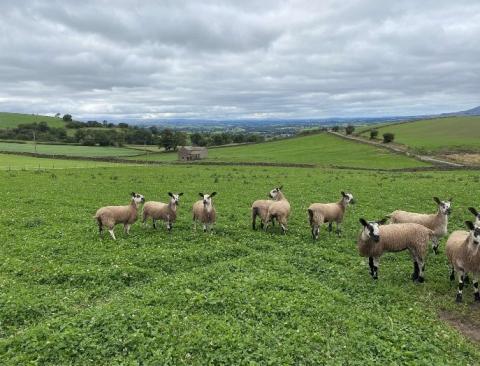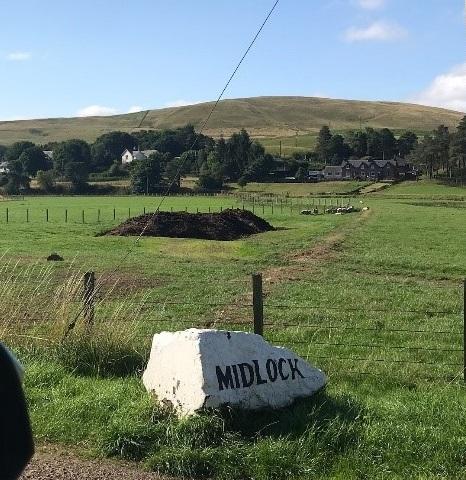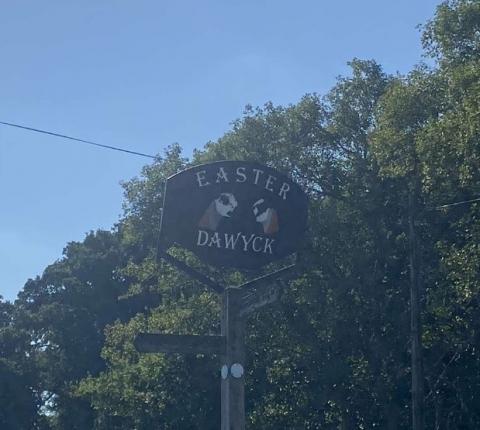Farming Connect Study Visit - Carms Blues
Carms Blues
Carmarthenshire
31 August – 3 September 2021
1 Background
[Why did you go? Provide some background information about your group and give an overview of your study visit’s aims and objectives]
Background
Carms Blues is a group of young sheep breeders who are keen to develop our businesses centred around the breeding and selling of Blue-faced Leicester rams. We want to develop the genetics and efficiency of the flocks to improve profitability and maintain viable farm businesses for the future.
We are a newly established group, but all three of us have our own flocks of ewes, and have been breeding Leicesters for many years. All of the members are aged between 18 – 21, and are keen to improve our knowledge of the breed and how to best prepare them for sale.
To date, we have produced and sold males and females of a respected quality; however, we are aware of the need to continuously improve – specifically in the following areas:
- Achieving faster growth rates, resulting in bigger and more marketable rams.
- Reducing the reliance on inputs and cost of feed to increase the margin of the rams sold, whilst also lowering on-farm GHG emissions.
- Exploring the use of alternative forage crops to achieve points 1 & 2 above.
Following analysis, and asking fellow established breeders who produce bigger and more marketable rams than we do, we have identified they strongly advocate the use of a brassica crop to complement grass during mid-summer grazing before the autumn sale season. We have been informed of the benefit of additional forage intake, reduced abdominal worm load and a way of minimising a shortage of quality forage if we have a dry warm summer and grass growth is low.
Aims and objectives
We need to see this forage crop being grown and fed to understand how it works best.
We want to know if we need to back-fence partly grazed forage, and how big an area to grow for the number of rams we each have.
Which variety is best – kale, rape or hybrid Typhon?
We also plan to find out the cost of growing this crop and re-establishing a grass ley afterwards.
We can then work out if the additional work, time and investment is worthwhile, or whether it is more profitable for us to continue as we are.
1.1 Attendees
[List your group members]
Harri Griffiths
Iestyn Richards
Henry Bennett
2 Itinerary
[What did you learn? Provide a description of your activities on each day of your visit and outline your key learning outcomes and knowledge gained]
(To note day 3 and 4, due to unforeseen circumstances, we had to rearrange some of the original visits noted in our application form)
2.1 Day 1
We left our village of Llandyfaelog at 10.00 a.m. and travelled North to Kirkby Stephen, where we visited Mr Richard Hutchinson of Kirkby Redgate Farm. Mr Hutchinson welcomed us to his farm and explained his farming system to us.
This was an upland farm, with a flock of 40 BFL ewes. We saw the ewes, ewe lambs and ram lambs. When we visited, all the females were outside grazing, but the tup lambs were inside, being fed concentrates in preparation for sale.
Travelled north and stayed at Premier Inn Carlisle overnight.
2.2 Day 2
On the second day, we visited Midlock, where the White family farm mainly commercial sheep, pedigree Scottish Blackface, Crossing Bluefaced Leicesters, Texel, Charolais sheep and British blue cattle. We saw the Bluefaced Leicester yearlings and ram lambs that were out grazing and fed twice a day on concentrate course mix feed.
Following Midlock in the morning, we then travelled west to visit Mr Thornburrow at Dawyck farm later in the afternoon. As a renowned Blueface breeder, we were keen to understand from him the treatment of both yearlings and ram lambs before sale. Visiting at the start of September gave us an opportunity to see the sale rams in their final weeks before sale, to find out what treatment they were given, to compare with other farms. Mr Thornburrow advised that keeping the rams in at night and out during the day onto grass was the way he believed his stock developed best before selling.
Stayed in The Crown, Peebles overnight
2.3 Day 3
With a short drive the following morning, we arrived at Kirkstead, where the Mcclymont family farm Blue-faced Leicesters and Scottish Blackface ewes. We saw that the Blue-faced Leicester yearling rams were kept outside and fed twice a day with concentrates. When we enquired about growing brassica crops, we were told that the hill ground environment had prevented previous forage crops from growing; alternatively, Mr Mcclymont said that he relies more on buying well grown animals, as he believes the genetics have a higher influence on growth rates compared with intensive feeding or growing brassica forage crops.
Stayed at Bamflatt Farm, Strathaven
2.4 Day 4
On the final day, we organised an alternative visit in the local area as suggested by a farm we had visited previously. Glenrath Farms is a family business that was established by John and Cathy Campbell in 1959, situated at the heartland of the Scottish borders. The Campbells breed Blueface Leicester, Scottish Blackface and Suffolk breeding rams.
Although the Campbell family do sell ram lambs, they emphasised that they specialise in yearling rams, due to the higher hill ground – with later lambing dates setting back growth rates of lambs compared with others.
Later that afternoon, we travelled home.
3 Next steps
[What are you going to do next? You will have gained valuable knowledge on your study visit which should enable you to put some of your new ideas in to practice or make changes to how you run your business. Draw your report to a close with a summary of action points and next steps for the group which builds on the knowledge gained on this visit and ensures it is put to good use]
As a result of this study tour, we have learnt that it is possible to produce the highest quality breeding stock without over-reliance on brassica crops. For example, Kirkstead and Midlock – who have consistently bred stock to earn many thousands of pounds – do not grow brassica forage crops to achieve the highest growth rates. These top breeders believe that a combination of intensive feeding and consistently buying the proven bloodlines has a bigger impact on growth than feeding and variety of grass or forage crops.
Alternatively, Kirkby Redgate adopted an intensive system in order to sell their stock as lambs, rather than keeping them for an additional year to sell as yearlings. This intensive system required the stock to be housed and fed concentrates to achieve this. Also, over-wintering stock was seen to be an expensive cost, when grass is at a shortage for the flock ewes before lambing.
The common theme among all the visited farms was the attention to elite bloodlines as an essential element to benchmark performance against previous years and other competing flocks.
Action points:
- Benchmarking, all group members to weigh lambs at the same time to compare weights.
- Attention to bloodlines, when choosing the next stock ram and females to ensure that the flock’s faults will improve.
- Target the commercial mule market to produce stock that matches the changing demands of the customer.
- Cost-efficiency – in comparison to the flocks we visited, we would have smaller flocks, and should consider jointly purchasing stock rams together, to buy higher quality stock and elite proven bloodlines with a bigger budget.
- Develop a wider relationship with the visited farms and suggest forming a bigger group for benchmarking figures and knowledge for practice and continuing to improve our flocks.
All group members thoroughly enjoyed the study tour, and being around like-minded people who were keen to learn and to improve their businesses. The group would like to thank Farming Connect for the opportunity, and the hosts for their time and their readiness to share knowledge.



